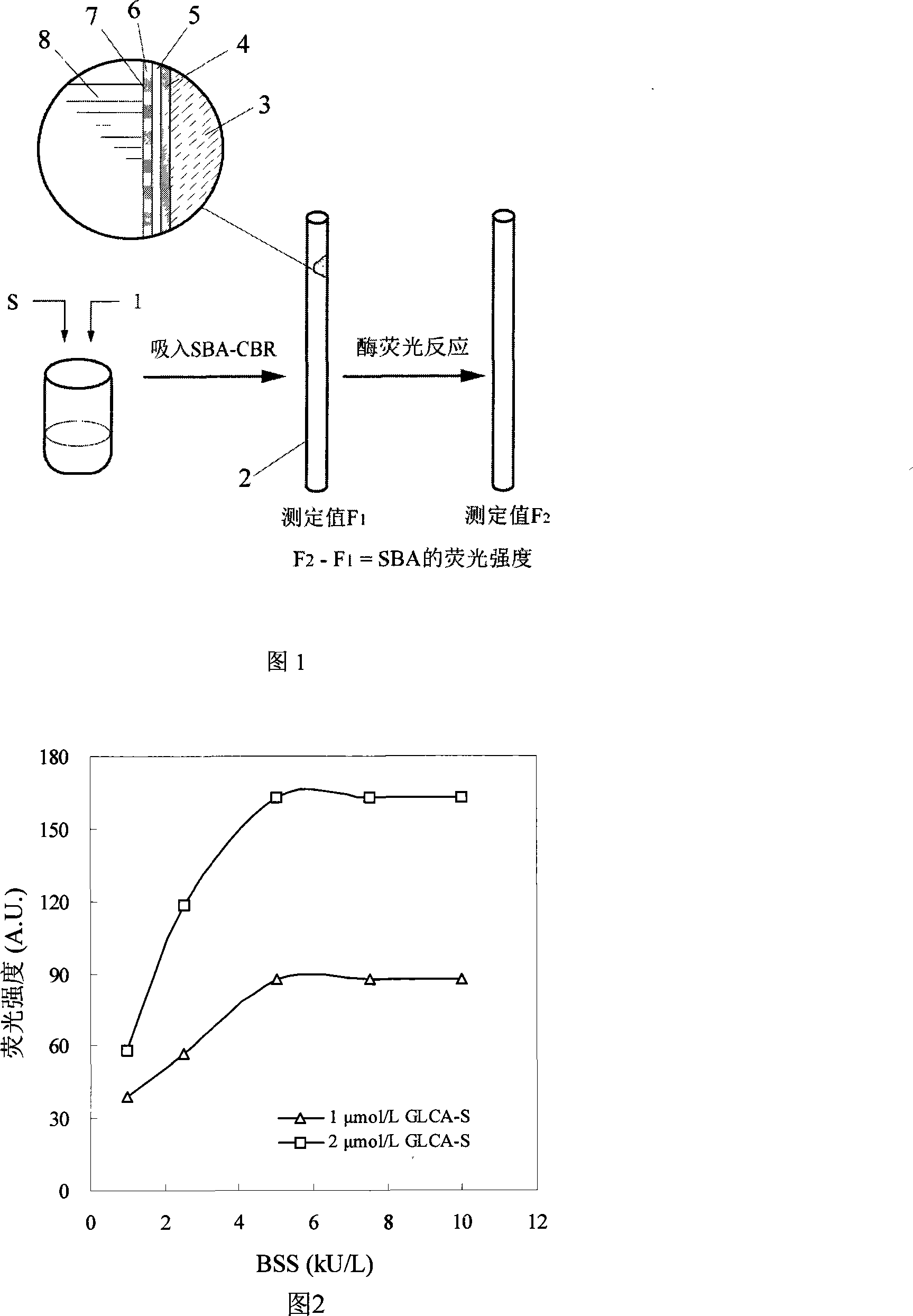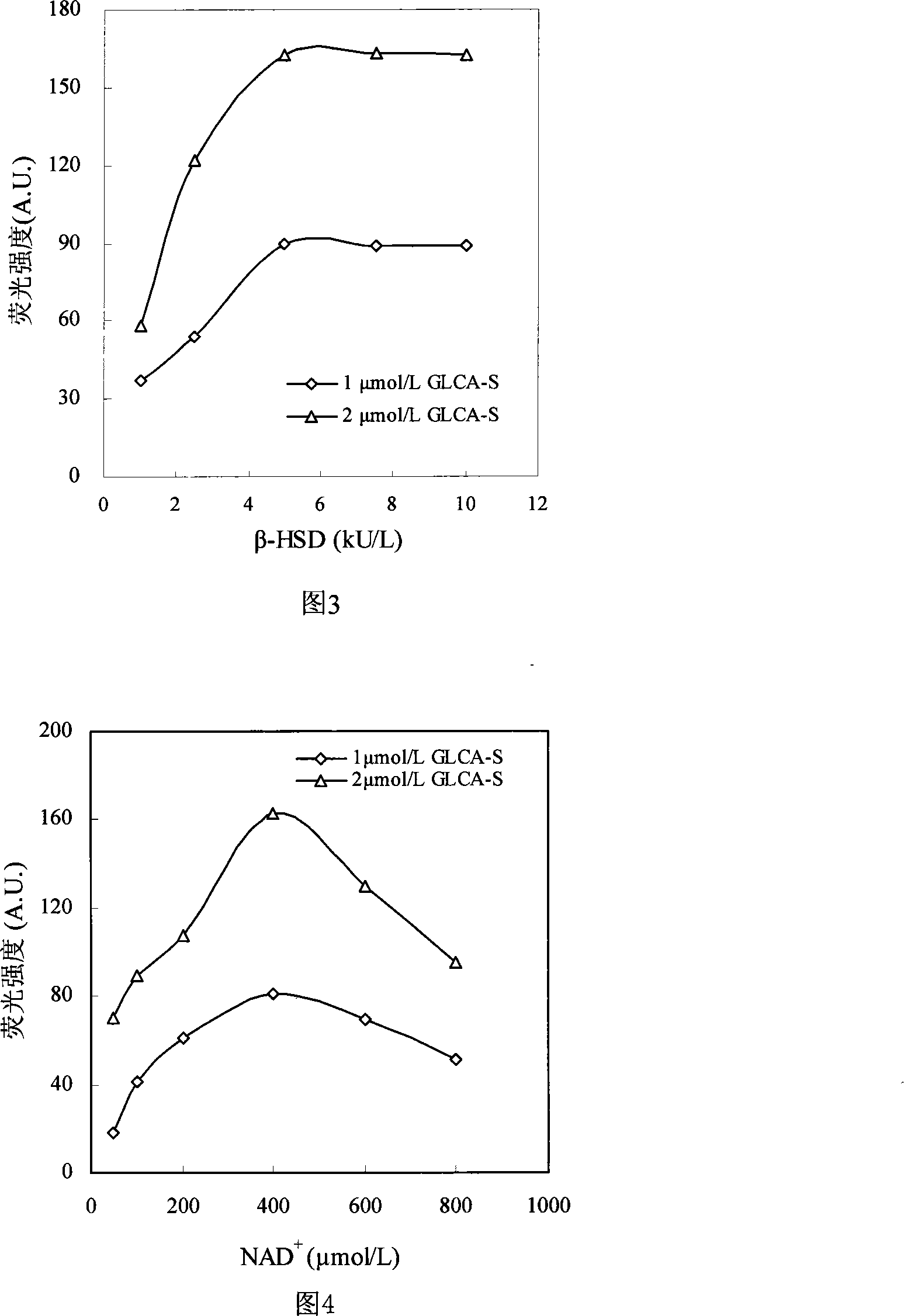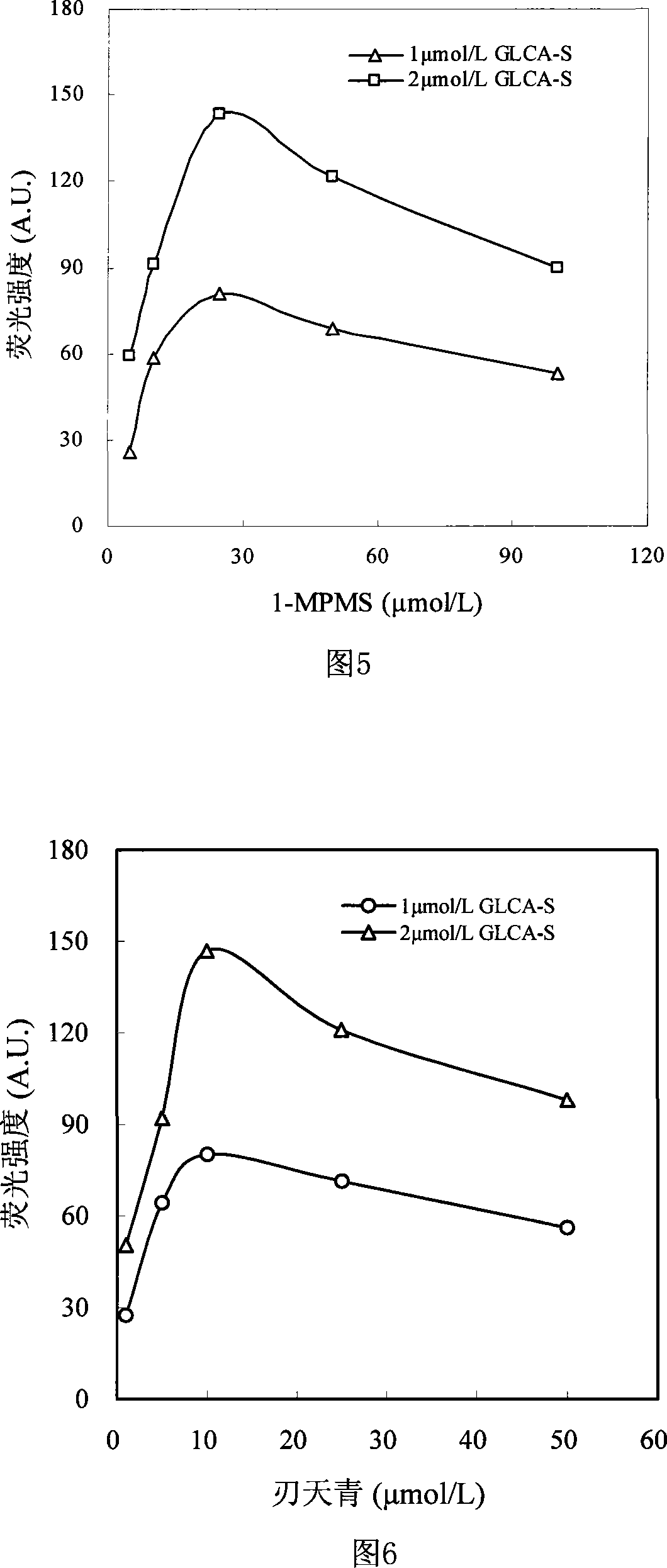Sulfated bile acid enzyme fluorescence capillary analytical method and enzyme fluorescence quantitative reagent kit
A technology of capillary analysis and sulfonation, which is applied in the field of clinical biochemical analysis, can solve the problems of expensive reagents that can only be used once, low sensitivity, and reagent pollution, so as to overcome the weaknesses of easy denaturation and instability, improve sensitivity, and operate short time effect
- Summary
- Abstract
- Description
- Claims
- Application Information
AI Technical Summary
Problems solved by technology
Method used
Image
Examples
Embodiment 1
[0058] This example is to investigate the effect of the concentration of immobilized BSS (6) in SBA-CBR (2) on the fluorescence intensity. Experimental conditions: excitation wavelength 540nm, emission wavelength 580nm, reaction solution volume 18μL, 500μmol / Lβ-NAD + , 50μmol / L1-MPMS, 50μmol / L resazurin, 5kU / Lβ-HSD(7), pH8.0, reaction temperature 37℃, reaction time 10min; change BSS(6) concentration in the range of 1-10kU / L , using 1.0 μmol / L and 2.0 μmol / L GLCA-S standard solution as the measurement sample respectively, and optimized the concentration of immobilized BSS (6) in SBA-CBR, the results are shown in Figure 2. The fluorescence intensity of the product reached the maximum when the dosage of BSS(6) was 5kU / L.
Embodiment 2
[0060] This example is to investigate the effect of the amount of β-HSD (7) in SBA-CBR (2) on the fluorescence intensity. Based on the above conditions, the dosage of BSS(6) was 5kU / L, and the concentration of β-HSD(7) was changed in the range of 1-10kU / L to investigate its effect on sensitivity. The results are shown in Figure 3. The fluorescence intensity of β-HSD(7) increased gradually in the range of 1-5kU / L; when the dosage of β-HSD(7) was 5kU / L, the fluorescence intensity reached the maximum.
Embodiment 3
[0062] This example is to investigate β-NAD + Effect of concentration on fluorescence intensity. The amount of β-HSD (7) was 5.0 kU / L, and other experimental conditions were the same as in Example 2. Change β-NAD in the range of 50-800μmol / L + concentration, examine β-NAD + The effect of concentration on the sensitivity of the method. The results obtained are shown in Figure 4. β-NAD + In the range of 50-400μmol / L, the fluorescence intensity of the reaction system gradually increases, and the fluorescence intensity reaches the maximum at 400μmol / L; when β-NAD + When the concentration is higher than 400μmol / L, the fluorescence intensity decreases instead.
PUM
| Property | Measurement | Unit |
|---|---|---|
| thickness | aaaaa | aaaaa |
Abstract
Description
Claims
Application Information
 Login to View More
Login to View More - R&D
- Intellectual Property
- Life Sciences
- Materials
- Tech Scout
- Unparalleled Data Quality
- Higher Quality Content
- 60% Fewer Hallucinations
Browse by: Latest US Patents, China's latest patents, Technical Efficacy Thesaurus, Application Domain, Technology Topic, Popular Technical Reports.
© 2025 PatSnap. All rights reserved.Legal|Privacy policy|Modern Slavery Act Transparency Statement|Sitemap|About US| Contact US: help@patsnap.com



